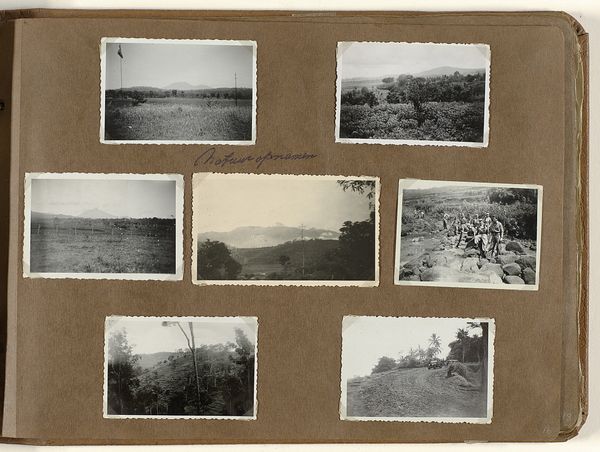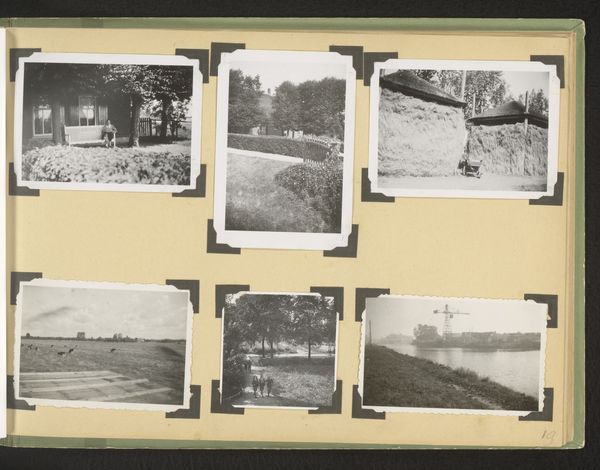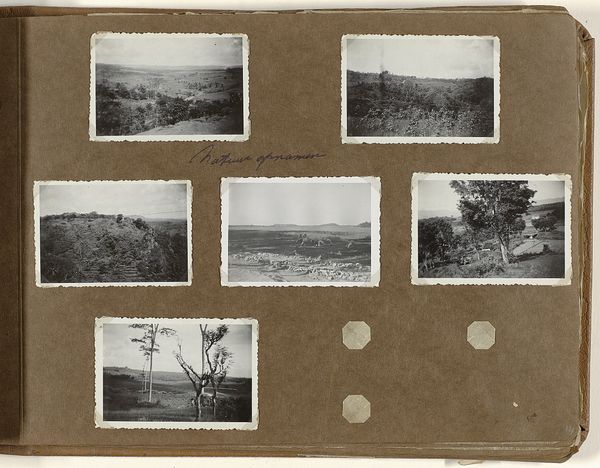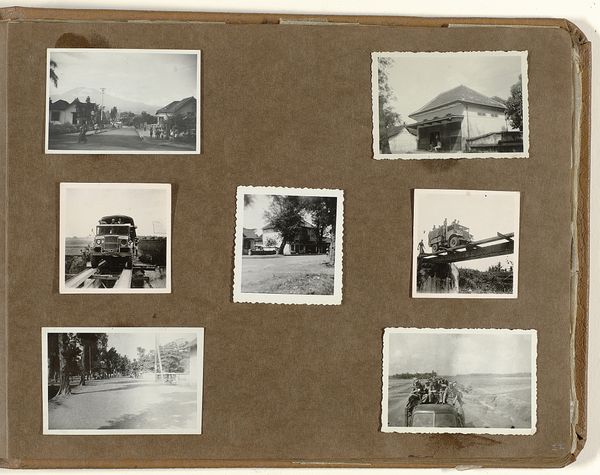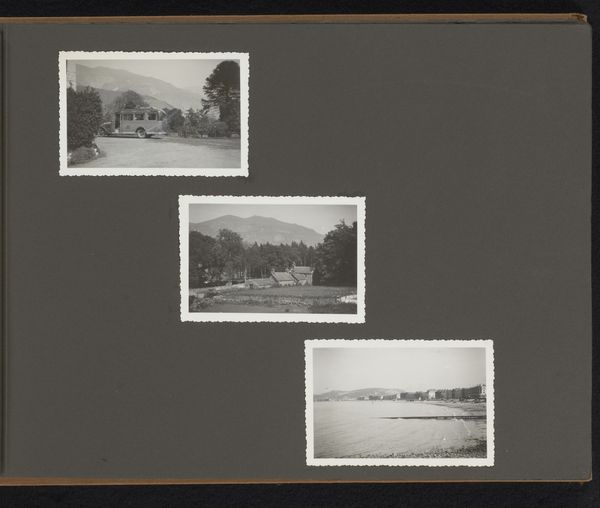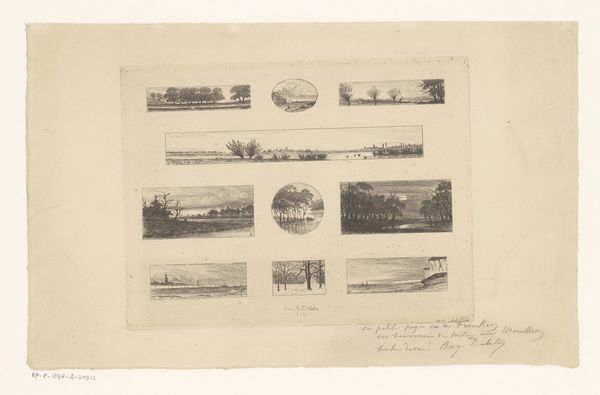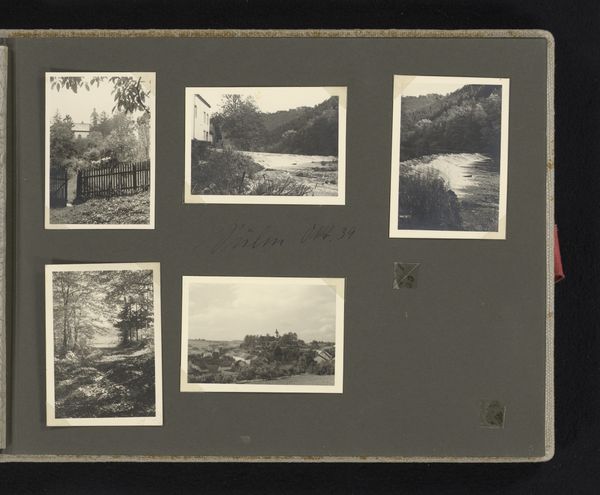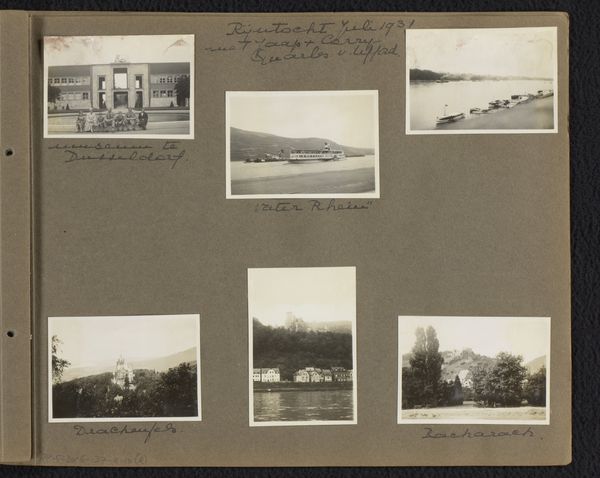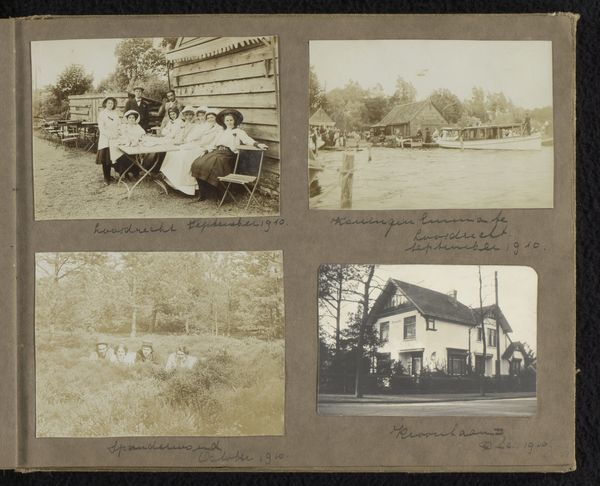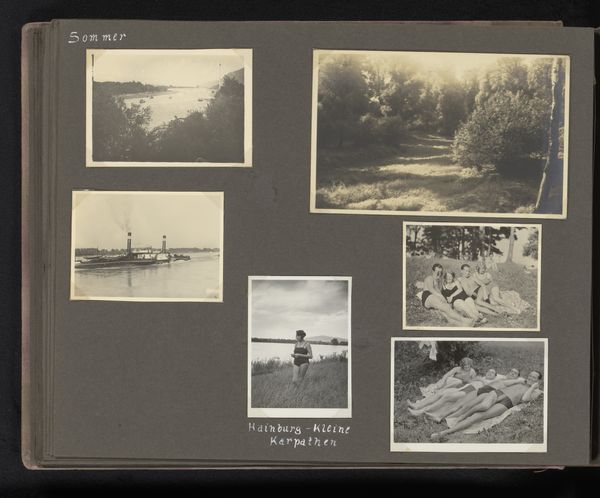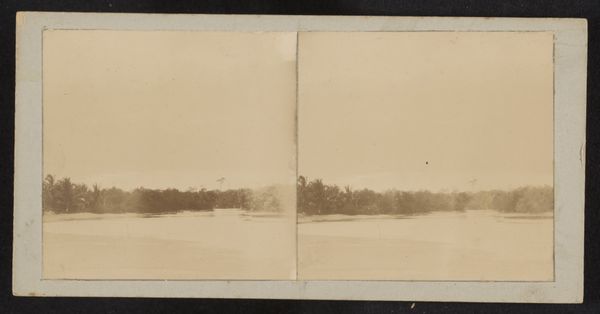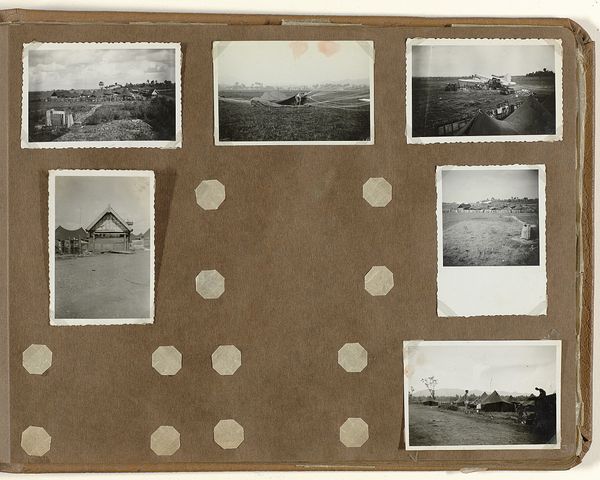
Dimensions: height 24 cm, width 34 cm
Copyright: Rijks Museum: Open Domain
Editor: This is an interesting album, titled "Natuurropnamen", created between 1948 and 1949, containing a series of albumen prints. They seem like straightforward landscape photographs, but something about the way they're displayed in the album gives them a constructed feel, like they are meant to evoke a particular narrative. How do you interpret these images, seeing them together like this? Curator: It’s crucial to consider when and where these photos were taken. Post-war Southeast Asia, particularly Indonesia, was in the midst of a complex struggle for independence. The album's constructed feel might be tied to colonial representations of landscape and labour. How do these seemingly neutral landscapes reflect the politics of that era, the transition from colonial control to nascent national identities? Editor: That's a fascinating point. So, these scenes of rice fields and people working could be read not just as depictions of daily life, but as visual arguments about land, ownership, and perhaps even the potential for a post-colonial future? Curator: Precisely. Think about how the 'exotic' is presented and consumed through photography during the colonial era. The album could perpetuate, subvert, or negotiate those established modes of seeing. Who compiled this album, and for what purpose? Was it meant to be scientific, nostalgic, or something else? Those considerations also matter. Editor: I hadn’t considered the perspective of the photographer in the album. I am realizing that what seems like objective documentation could be laden with political undertones and commentary. It prompts us to question what exactly the camera's eye chooses to capture and, just as importantly, what it omits. Curator: And how the institution then presents the photograph reinforces those meanings. The politics of imagery extend beyond the creation of the work to its display and interpretation. Examining those decisions can tell us a lot. Editor: Absolutely. Thanks, this gives me a lot to think about regarding the album's significance and broader context! Curator: Likewise! It's a valuable lesson on how landscapes are never simply landscapes; they’re reflections of the socio-political landscapes that produce them.
Comments
No comments
Be the first to comment and join the conversation on the ultimate creative platform.
